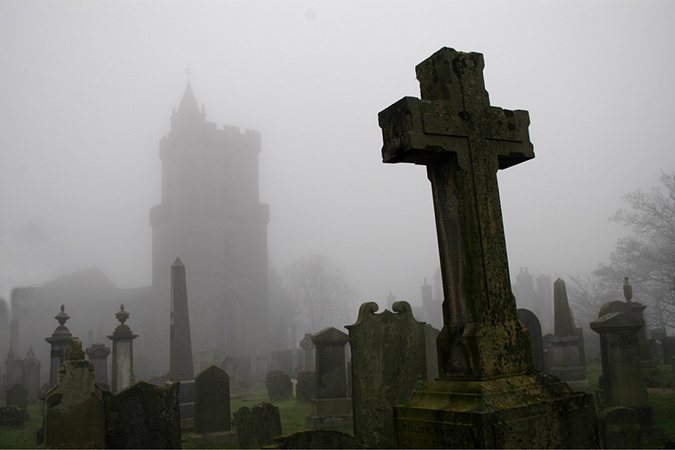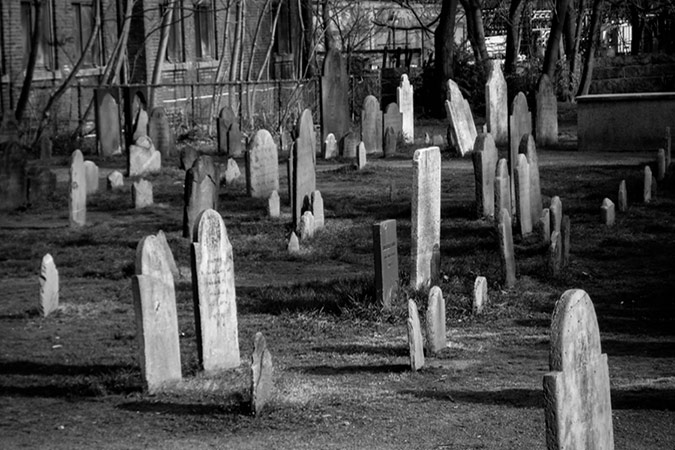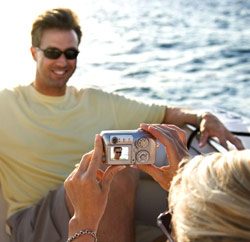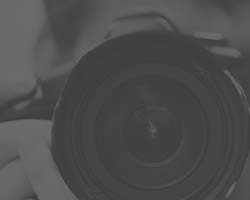Bruno Schreck was spot on when he said, “If you love photography enough, the equipment will come, the portfolio will result and if you enjoy the process, success will follow. You will evolve your own formula.” Here is a list of the camera equipment that once served me well, but is now retired. I then detail what’s currently in my bag.
Gear Graveyard
Canon 6D
The 11 autofocus points clustered in the center of the viewfinder quickly seemed rather antiquated. The built in wifi was nice, as was the full frame image quality and ISO sensitivity. Still, the camera was slow, bulky, and rather uninspired in both design and feature set. This was my last DSLR before switching to Mirrorless. I don't miss it.
GoPro Hero 3It died suddenly with no prior signs of malfunction. I discovered it a few weeks before a trip as I went through my routine gear check. I tried a fresh battery, still nothing. I went online and found others were having the same problem. Turns out, it's so common that GoPro actually published a page of troubleshooting instructions. None of it worked.
Canon 40DI had two of these and they were amazingly tough bodies made of magnesium alloy. I used them in horrific storms, frigid temperatures, and rain forests. The shutter did die on one of them and needed to be replaced. It shot 6 frames per second which was fast enough for birds in flight and sports. The downside was the LCDs poor resolution, and the lack of a tilt screen. This was my favorite DSLR.
Take an Online Photography Course
Canon 10DThis was my first DSLR and it didn't disappoint. While it was only 6 megapixels and topped out at 3 frames per second, it was good enough to use for my first job as a photojournalist at Newsday. It's funny to reminisce about how I never dared to go above ISO 800. ISO 1600 was quite a noisy mess. We've sure come a long way!
Canon Elan 7I shot slide film with this beauty and loved how quiet and stealthy it was. If I recall correctly, it didn't have a spot meter so I had to use the partial meter. It was a joy to use though, and the unforgiving nature of slide film forced me to really master in-camera exposure.
Canon Rebel(Grey Market)Yes, my very first film SLR, and the camera store pulled a bait and switch. They showed me the silver USA model and then switched it out with the all black grey market model. I didn't know better and went with it. When I tried to pay with a credit card, the salesperson repeated, "No, no, show me the green!" Despite all of this, I loved the set up and used it extensively to start learning exposure and composition.
 Other stuff worth eulogizing
Other stuff worth eulogizing
Canon 17-40 f4, Canon 70-200mm f2. 8, Canon 100mm f2.8 macro, and the Canon 400mm f5.6. While all of this glass was truly high quality, it also weighed 25-30 pounds. Long hikes up and down mountains would become painful and greuling after just a few hours.
ISO 50 Fuji Velvia slide film - seeing an image for the first time on a lightbox through a loupe was exciting. This film was vibrant and virtually grain free making it a lot of fun to work with. Many image editing software companies have tried to recreate this look ever since.
Adobe Photoshop - it's true, I haven't needed to use Photoshop in years. If I can't edit it in Lightroom then I've done something seriously wrong.
What’s in My Bag Now?
In late 2015, I switched from a Canon Full Frame body to a smaller, more portable micro four-thirds mirrorless system. Although larger sensors have their benefits, I find the ability to carry a lightweight system to be invaluable, especially for my travel photography. The image quality is outstanding, and this has translated into more creative work, and increased image sales. To manage and edit my growing collection of images, I find Adobe Lightroom to be a superb tool.
The Pen F is one of my favorite cameras, and the one that gets carried with me most often. With its creative art filters, monochrome modes, and 20 megapixel sensor, it has a full set of features in a super portable package.
Want Chris As Your Photography Teacher?
The EM1 MKII is a small powerhouse of a camera. It's the body I use most for wildlife and sports photography. With an amazing autofocus system and blazing speed, it's possible to capture the decisive moment even in high-speed action situations. With a weatherproof body, it can withstand even the most demanding conditions. The comfortable grip also provides excellent ergonomics when using longer telephoto lenses.
The OMD EM10 MKII is the most underrated camera in the Olympus line. It may not be as fast as the OMD EM1 MKII, but it's perfect for capturing scenics and landscape photography. Many of my favorite images from Iceland were captured with this body.
It's challenging to find a lens that is both ultra-portable and of superior optical quality. The Panasonic 20mm f1.7 is a rare exception however. Known as a "pancake lens" due to its diminutive size, it barely protrudes from the camera body making it a pocketable companion for everyday shooting. With its wide aperture, it's possible to create beautiful bokeh in the background while keeping your subject tack sharp. This lens is a constant companion to my Olympus Pen F.
At just over 4 ounces, the Olympus 45mm f1.8 is a lightweight phenom of a lens. With a classic 90mm equivalent focal length, it's ideal for portraits and tight landscape compositions. Its unobtrusive size makes it easy to blend in and shoot without drawing unwanted attention. At f1.8 there is enough light to shoot in dim conditions while also creating super shallow depth of field.
The Olympus 12-40mm f2.8 Pro is capable of handling just about anything. It's sharp, focuses fast, and while not a macro lens, has surprisingly good close-up capability. With an equivalent focal range of 24-80mm, this is a travel photographer's dream lens. Good things can come in small packages and this lens proves it. Built to last, this has a weatherproof design, making it usable even in the rain.
If you're looking for an ultra sharp telephoto lens, you'll be hard pressed to find a better option than the Olympus 40-150mm f2.8 Pro With an equivalent focal length of 80-300mm, this is the perfect telephoto lens for wildlife, birds in flight, aviation, and sports photography. Believe it or not, it also doubles as an outstanding close-up lens. I've used it to photography insects, flowers, and butterflies with frame-filling success. This is always paired with my OMD EM1 MKII for a super fast combo.
Take a Professional Photography Class
When a little extra reach is needed, the Olympus 1.4x converter is an outstanding addition to your kit. When paired with the 40-150mm f2.8, this becomes a 420mm f4 at the long end. This makes it powerful enough to capture clear images of distant wildlife and birds.
A circular polarizer is one of the most important tools you can have in your bag. Not only does it make skies pop, but it eliminates the glare on non-metallic surfaces. For dramatic landscapes, the Hoya CPL is the way to go.
For the last 10+ years, I've used one tripod, the Gitzo 1325 Carbon Fiber model. It has taken a beating and is still in great shape. Finding the right tripod is no easy task as there are a lot of variables to consider. This one was the best balance of stability, weight, and ruggedness. Best of all, there is no center column which makes it really simple to compose from the ground.
Paired with my Gitzo 1325 is the Kirk BH3 ballhead. I prefer ball-heads to the traditional pan and tilt models which are hard to maneuver into position. With the ballhead, you can put the camera in nearly any direction quickly.
Can something as simple as a wrist strap change the way you shoot? I didn't think so, but after trying one, I've made the switch! Better late than never I guess. The reason for the change is actually quite straightforward. When the camera is no longer strapped to your neck, it frees you up to move it into more creative positions. It's totally secure so there is no risk of dropping or breaking it. Now, I would imagine this gets a bit uncomfortable with a heavy lens, but I use it with the Panasonic 20mm f1.7. By having the camera in my hand at all times I'm ready for anything.
There's no denying that photography is a powerful art form, just as painting, music, and sculpture are. If you look at the history of these disciplines, you'll find another similarity. Those who enjoyed long term success did so not by following current trends, but by paving their own way. This of course is no easy feat, perhaps best expressed by Alfred de Musset who said "How glorious it is - and also how painful - to be an exception". Whether it's your choice of gear, or the subject matter you focus on, throw out the rule book and follow your own heart.







